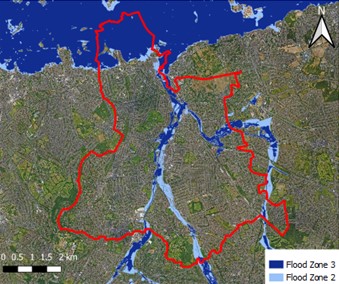Remembering the Great Flood of 1968
This September marks the 55th anniversary of the Great Flood of 1968, with 15th September being the day when it was considered at its worst. It is deemed as one of UK’s most treacherous flood events from the 20th Century.
Flooding was caused by heavy rainfall lasting most of two days, resulting from a strong depression over France. It led to heavy damage to housing, bridges and roads, as well as major agricultural damage. An area heavily affected by the Great Flood of 1968 was Lewisham borough in Southeast London, the main focus for this blog.
1968’s flooding of Lewisham
The rainfall didn’t cause flooding of Lewisham directly. Instead, the borough’s flooding was caused by the extreme rainfall breaking the banks around Lewisham’s rivers: Ravensbourne, Quaggy, and Pool. Damage was vast, reaching homes and business, flooding streets, and stopping people getting to school and work.
The Great Flood of 1968 has been ingrained into Lewisham’s history. This is shown through the Lewisham Underwater project, where the flood is commemorated with artwork, community activities, and a flood beer! With this blog focusing on Lewisham in the 1968 September flood, we at Unda have produced a flood map to emphasise the extent to which Lewisham is still at risk of flooding.

The above map provides a rough outline of Lewisham borough, marking current possibilities of fluvial flooding. Flood Zone 3 areas represent a 1 in 100 river flooding a year, whilst Flood Zone 2 is a 1 in a 1000 river flood a year. As shown by the key, areas within the borough that are at risk of flooding are around the rivers, as well as the north of the borough around the Thames.
Overall, it is important to acknowledge the extent of the flooding in September 1968. Despite this blog highlighting the impacts on Lewisham, other areas of the country were also considerably damaged. Whilst Lewisham still has some risk of river flooding, the rivers are left to their own natural devices rather than extreme flood mitigation measures. The Lewisham community has embraced the flood and their rivers, shaping people’s lives and current history.